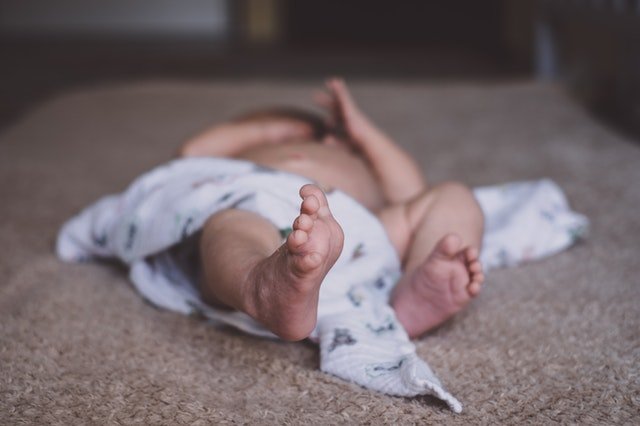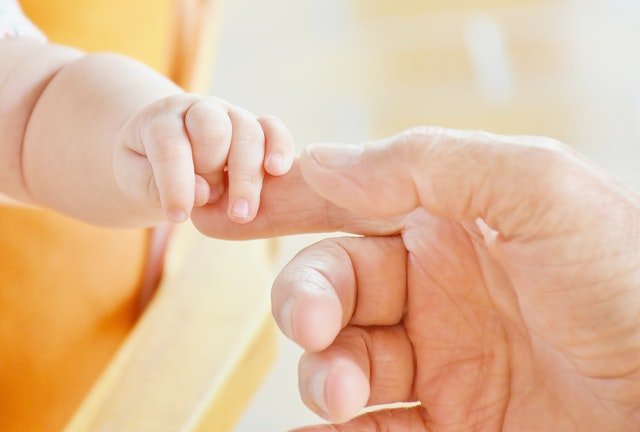Explanation of Sudden Infant Death Syndrome (SIDS) –
Against Sudden Infant Death Syndrome in Manchester | Sudden Infant Death Syndrome (SIDS), also known as cot loss of life or crib loss of life, is the sudden of inscribed death of a kid lower than 12 month of age. Prognosis requires that the death remains unexplained even after a thorough autopsy and completed death scene investigation. SIDS usually occurs during sleep. Usually death happens during the hours of 00:00 and 09:00. There is often no evidence of struggle and no noise produced.
The specific cause of SIDS is unknown. The requirement of a mixture of factors including a specific underlying susceptibility, an exact time in growth, and an environmental stressors has been proposed. These environmental stressors might include sleeping on the stomach or side, overheating, and exposure to tobacco smoke.
Unintended suffocation from bed sharing (also called as co-sleeping) or tender objects might also play a role. Another risk variables is being born before 39 weeks of gestation. SIDS makes up approximately 80% of Sudden and Unexpected Infant Deaths / SUID. Other different causes include infections, genetic disorders, and heart problems.
Knowing The Risk of SIDS.
Placing an infant to sleep when lying on the stomach or the side, will pushes the risk. This increased risk is greatest at 2nd to 3rd months of age. Elevated or lowered room temperature also increases the risk, as does excessive bedding, clothes, soft sleep surfaces, and stuffed animals.
Bumper pads may increase the risk of Sudden Infant Death Syndrome due to the danger of suffocation. They are not recommends for kid below one years of age as this risk of suffocation drastically outweighs the risk of head bumping or limbs getting stuck in the bars of the crib.
Sharing a mattress with mom and dad or siblings increases the risk for SIDS. This risk is greatest within the first 3rd months of life, when the mattress is soft, when one or more persons use the infant’s bed, especially when the bed companions are using drugs or alcohol or smoking. The risk remains, however, even in parents who do not smoke or use drugs.
The American Academy of Pediatrics thus recommends “room sharing without bed sharing”, stating that such an association can decrease the risk of SIDS by as mush as 50 percent. Furthermore, The Academy recommended against devices marketed to make bed-sharing “safe”, such as in-bed co-sleepers. The infant actually does need our surveillance, but, Can we do it at any time? Here’s the factors you should care about.
Sleep Positioning and Bedding Equipment Usage.
Sleeping on the back has been found to cut the risk of SIDS. Sleeping on the back does not appear to increase the risk of choking, even in those with Gastroesophageal Reflux Disease. While babies in this position, they may sleep more comfortable and lightly. Sharing the same room as one’s parents but in a distinct mattress, may decrease the risk by half.
It’s great if we allow the infant to lay down on our side but in different mattress, so when placing a breastfeeding would be more simpler and you can quickly get up when it feels the moments is come.
Product safety experts advise towards using overly soft mattresses, sleep positioner, bumper pads (crib bumpers), stuffed animals, or fluffy bedding in the crib. They also suggest an alternative of dressing the child warmly and keeping the crib “naked”. Blankets or other clothing should not placed over a baby’s head. The FDA and the Consumer Product Safety Commission, issued a warning about using the bed accessories because they are hazardous.
The recommendation of Dr. Rachel Moon at the National Medical Children’s Center in Washington DC United States. If you wants your infants to be more safer, do not let the infant sleep in the crib at night, Because we do not know what will happens if he sleeps alone such a youngest age. So, Against Sudden Infant Death Syndrome in Manchester, Your city.

SIDS Prevention
The most effective way of decreasing the risk of SIDS is:
- Putting a child lower than one year old on their back when lay down.
- Other measures include a firm mattress separate from but close to caregivers,
- No loose mattresses
- A standard cool sleeping environment
- Put a pacifier,
- Avoiding exposure to tobacco smoke.
Breastfeeding
If the infant is expose to the first of this syndrome, The first thing to do is give him/her a breast milk until breathing return to regular condition. Some people assume that breast milk may defend babies from infections that might raise their SIDS risk.
Don’t drink alcohol if you give a breastfeed, because that raises your baby’s risk of SIDS. In addition, the simple contact is helpful. Skin-to-skin contact is necessary for your baby’s development.

Immunization
Immunization may additionally be important. We can reduce the risks with immunization, after the SIDS process is passes. Placing your baby to sleep with a pacifier, may also help prevent SIDS. Evidence says babies who has been get immunization, have a 50 % decreasing risk of SIDS compare with kids who aren’t fully immunized. This is in accordance with suggestion from the American Academy of Pediatrics
Pillow Usage on Sudden Infant Death Syndrome (SIDS) Prevention
For prevention to Sudden Infant Death Syndrome (SIDS), We should lay the infants on a back position with No Pillow At All!. Although a pillow can prevent the infant to move sideways to the stomach position rapidly and prevent choking while sleeping.
Using a cushion may inflicting them become trapped under it or wedged towards it, then the baby will unable to breathe.
To reduce the risk of Sudden Infant Death Syndrome, Kids should sleep flat on their back, in a clean cot without blankets, cushions, or toys. When they’re growing older than 12 month old, You may start to begin introduce them to a pillow.









